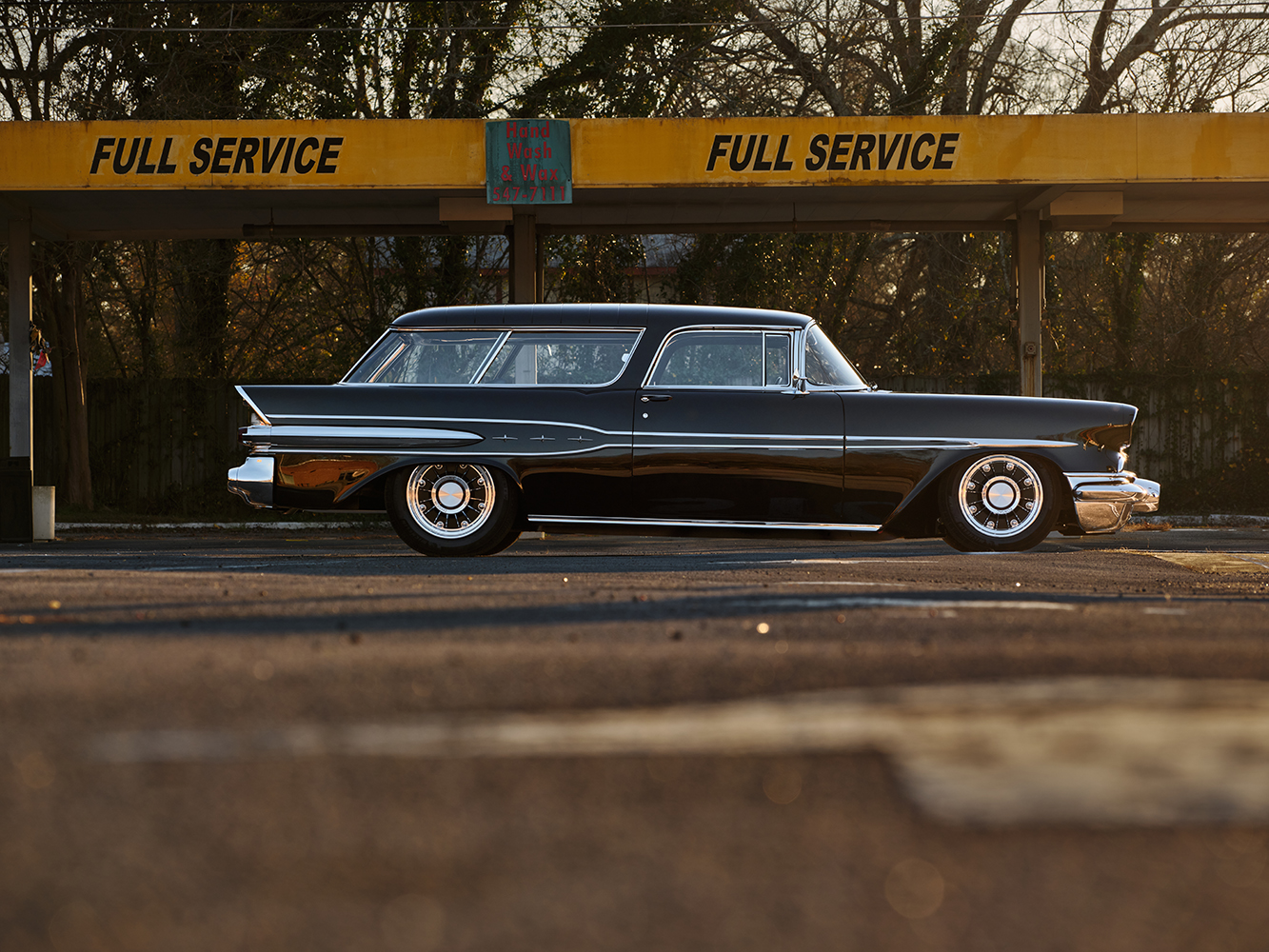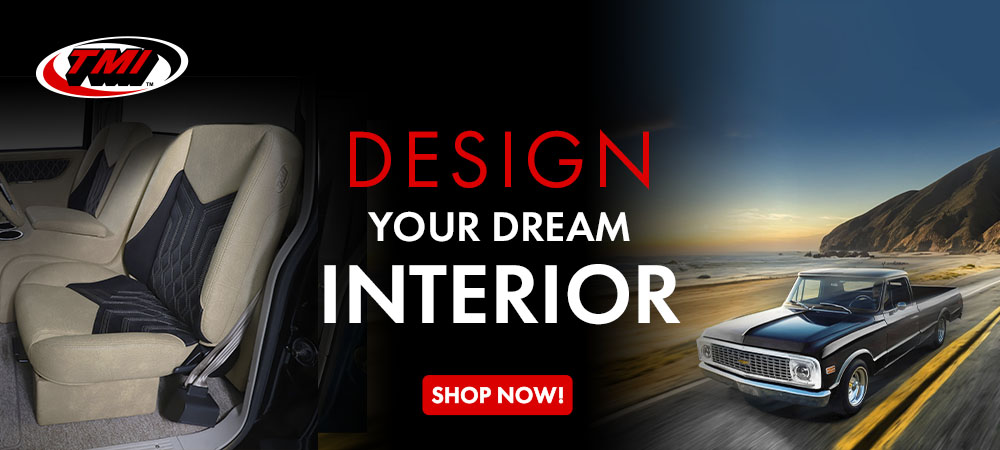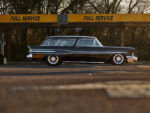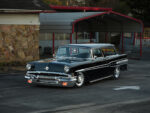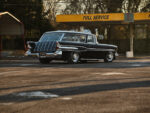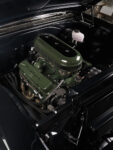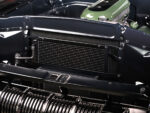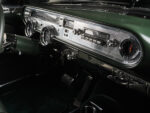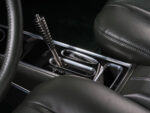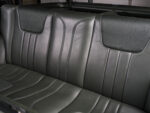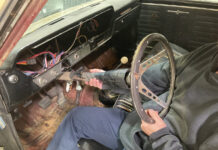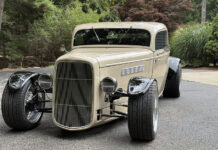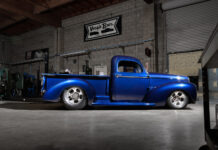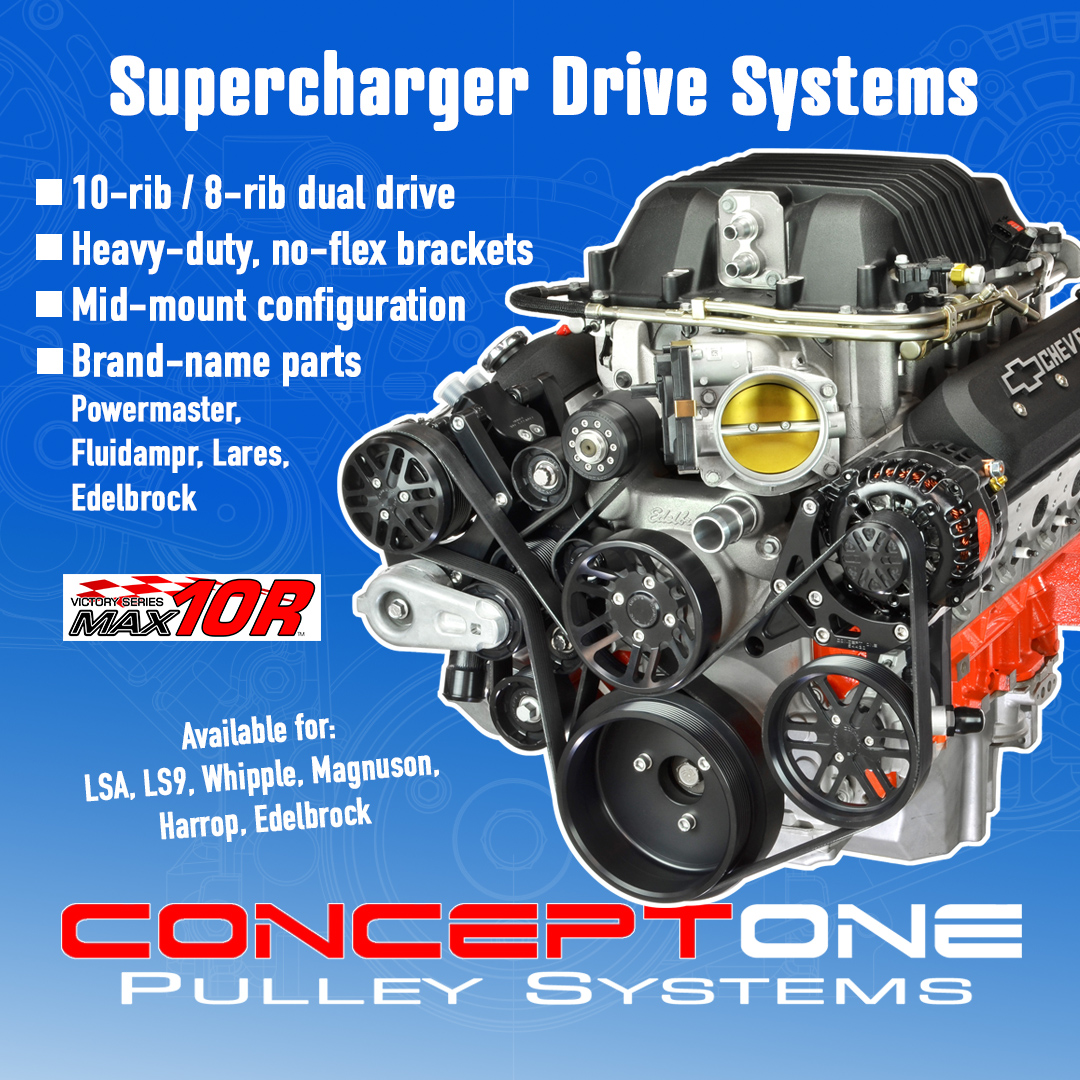By Brian Brennan – Photography By NotStock Photography
Doug and Debbie Kenny from Florida own a 1957 Pontiac Safari wagon, the perfect hot rod that transportation enthusiasts could desire. To bring this project to life, they enlisted the help of Alan Johnson and his team at Johnson’s Hot Rod Shop.

In 1957, the Pontiac Safari stood out as the most expensive model in Pontiac’s lineup, yet it also held the unfortunate distinction of being the least popular. It has been reported that the 1957 Pontiac Star Chief Custom Safari was a true rarity, with only 1,292 units produced during that year. Its appeal lay in a powerful 347ci V-8 engine, offering either 270 or an impressive 290 hp. The standard model produced 270 hp with a single four-barrel carburetor and a smooth Hydramatic transmission.
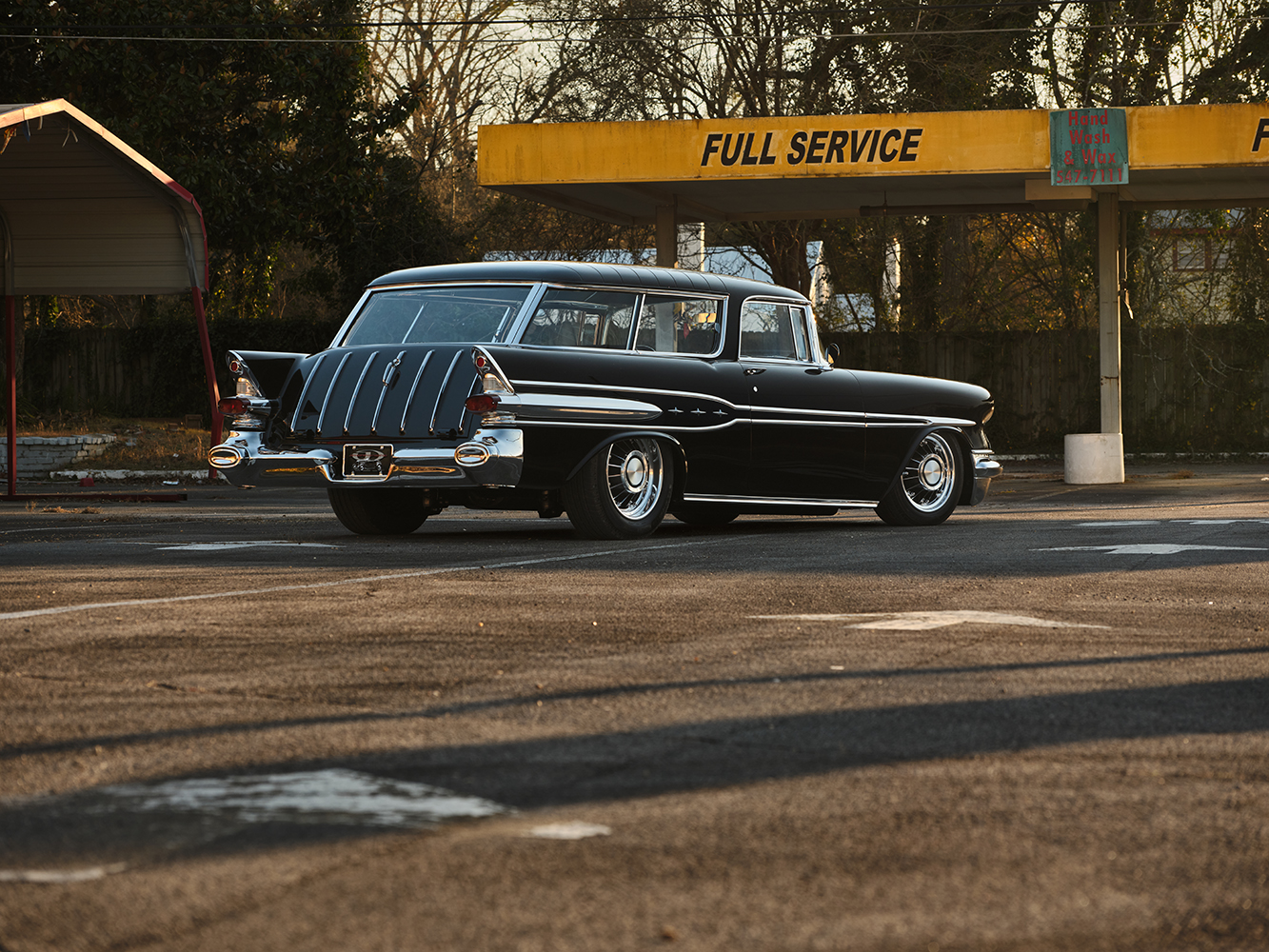
Meanwhile, the optional tri-power version unleashed its full potential with three two-barrel carburetors. This two-door version earned the endearing nickname “two-door Custom Safari,” setting it apart from its peers. Pontiac’s 1957 offerings included the Safari, Chieftain Safari, and Super Chief Safari. The Custom Safari models stood out for their shorter frames paired with the upscale components from the Star Chief line. As the decade unfolded, the legacy of the 1957 Pontiac Safari—a blend of style, power, and practicality—became a significant chapter in American automotive history, embodying the spirit of adventure of the era.
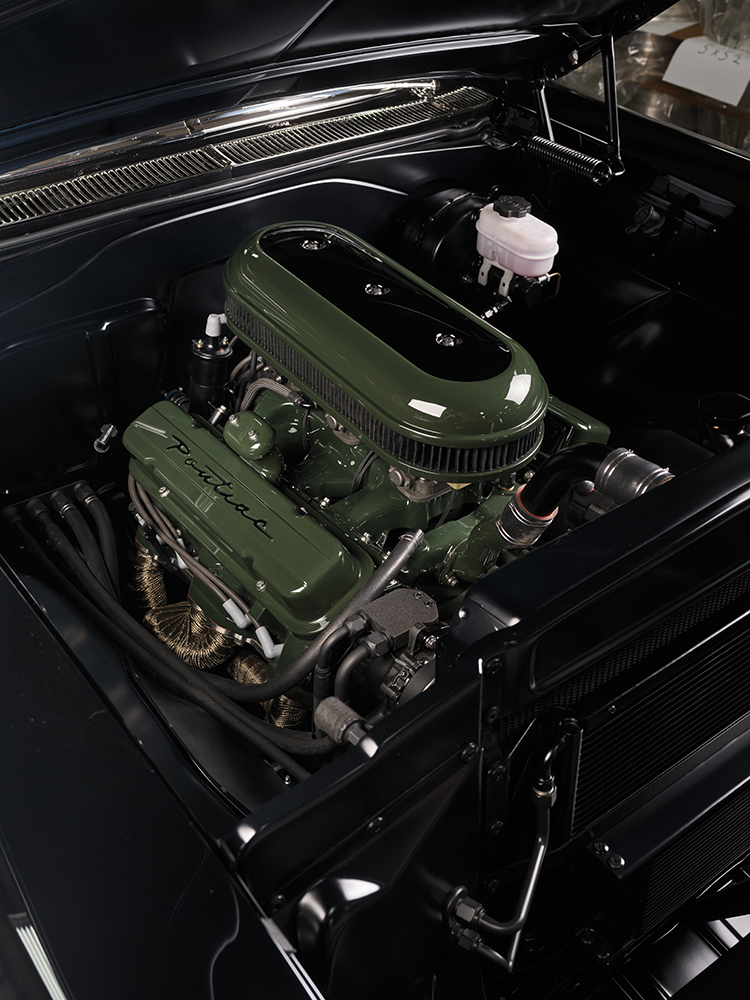
The chassis of the Kennys’ 1957 Pontiac Safari wagon is built on a Roadster Shop Fast Track setup, which features Corvette C6 spindles, Ridetech coilover shocks paired with Hyperco springs, and a 1.25-inch splined front sway bar equipped with C6 endlinks. A UniSteer rack-and-pinion manage steering. In the rear, the suspension comprises a Strange housing with a Geartec Inc. 9-inch third member with 3.70 gears and a 31-spline axle, all aligned by a Roadster Shop four-link setup, additional Ridetech coilovers with Hyperco springs, and a 1-1/4-inch Panhard bar.
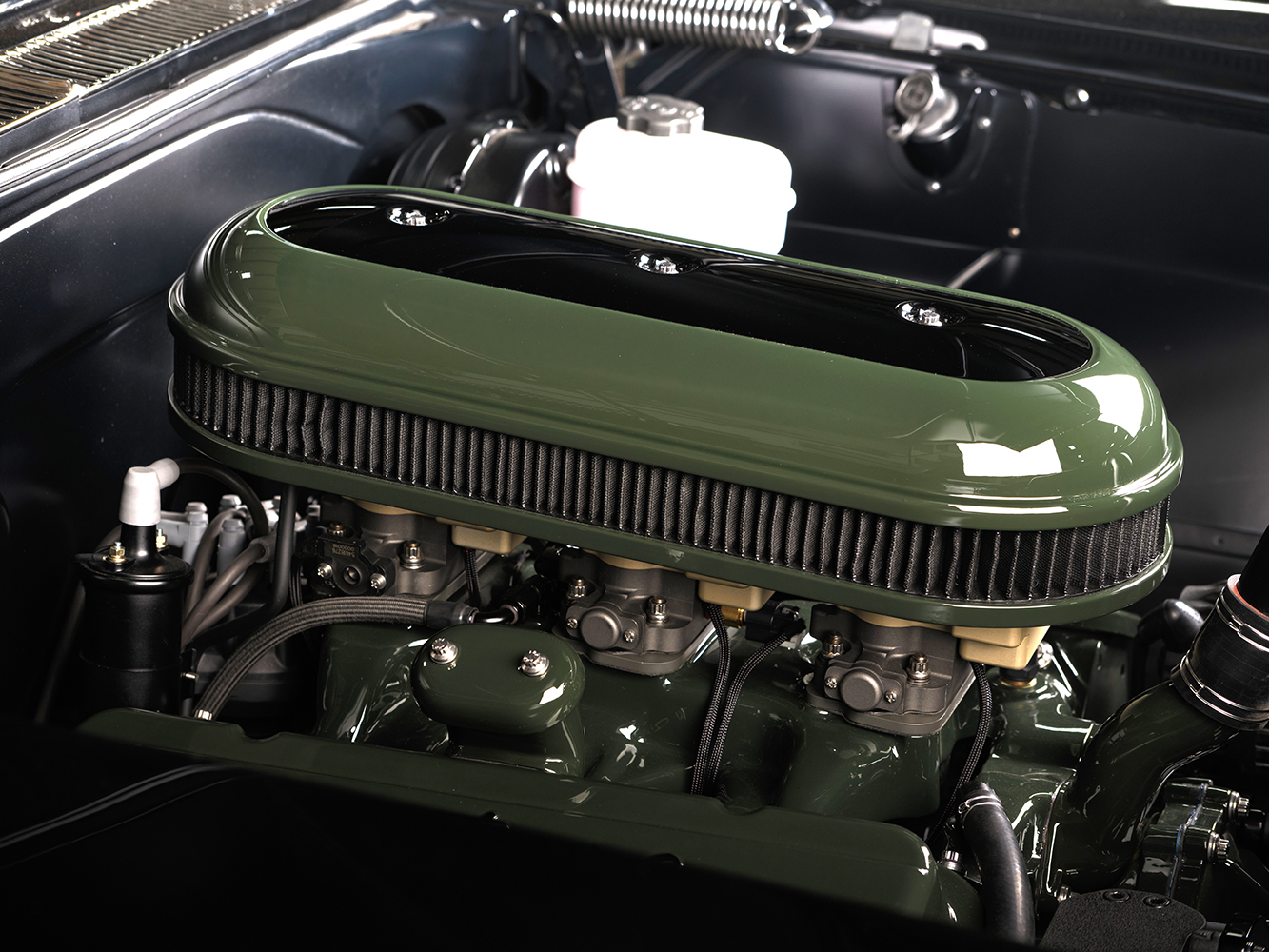
Enhancing the unique character of the Kennys’ Safari, the wheels were custom crafted at Johnson’s Hot Rod Shop (JHRS). These three-piece, eight-lug billet wheels measure 17 inches in the front and 18 inches in the back and are wrapped in Michelin tires, 215/60R17 in the front and 245/60R18 in the rear. The modern brakes are machined by JHRS, which conveniently hides Wilwood 13-inch drilled-and-slotted rotors paired with four-piston calipers in the front. Additional Wilwood components are located at the rear, featuring 12.19-inch drilled-and-slotted rotors, also with matched four-piston calipers. The brake system utilizes a GM-style master cylinder and brake booster.
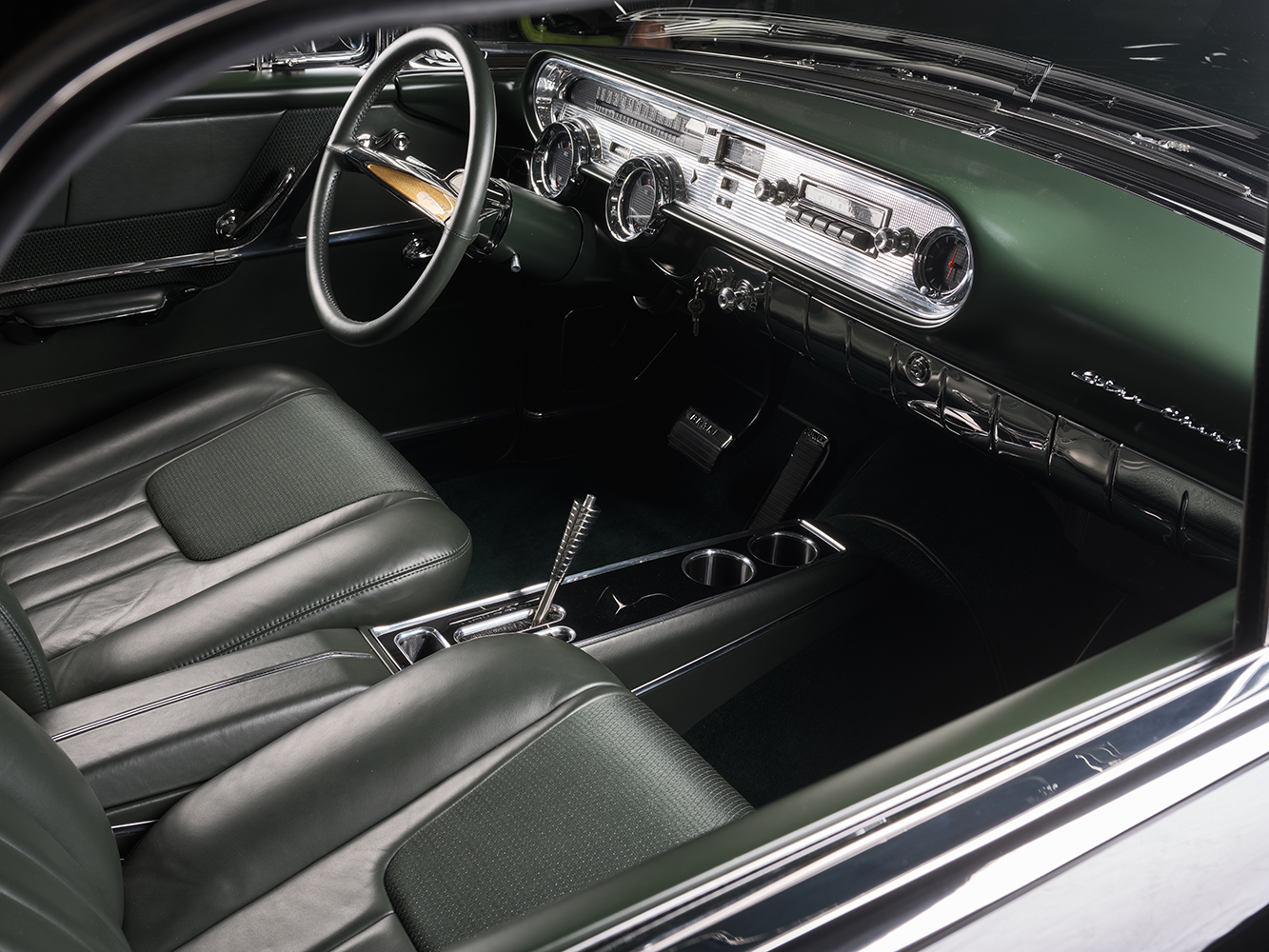
Their design reflected the classic eight-lug wheels (approximately a $120 option) provided by Pontiac from 1960-68, recognized for their aluminum hubs that combined the wheel and brake drum. Initially introduced to address brake fade issues tied to conventional drum brakes, the Kelsey-Hayes eight-lug option, crafted by Clayton Leach, showcased finned aluminum brake drums with cast-iron liners. This groundbreaking open-wheel design enabled better airflow and heat dissipation, which minimized brake fade and enhanced both functionality and aesthetics, making these wheels a celebrated element of automotive design history.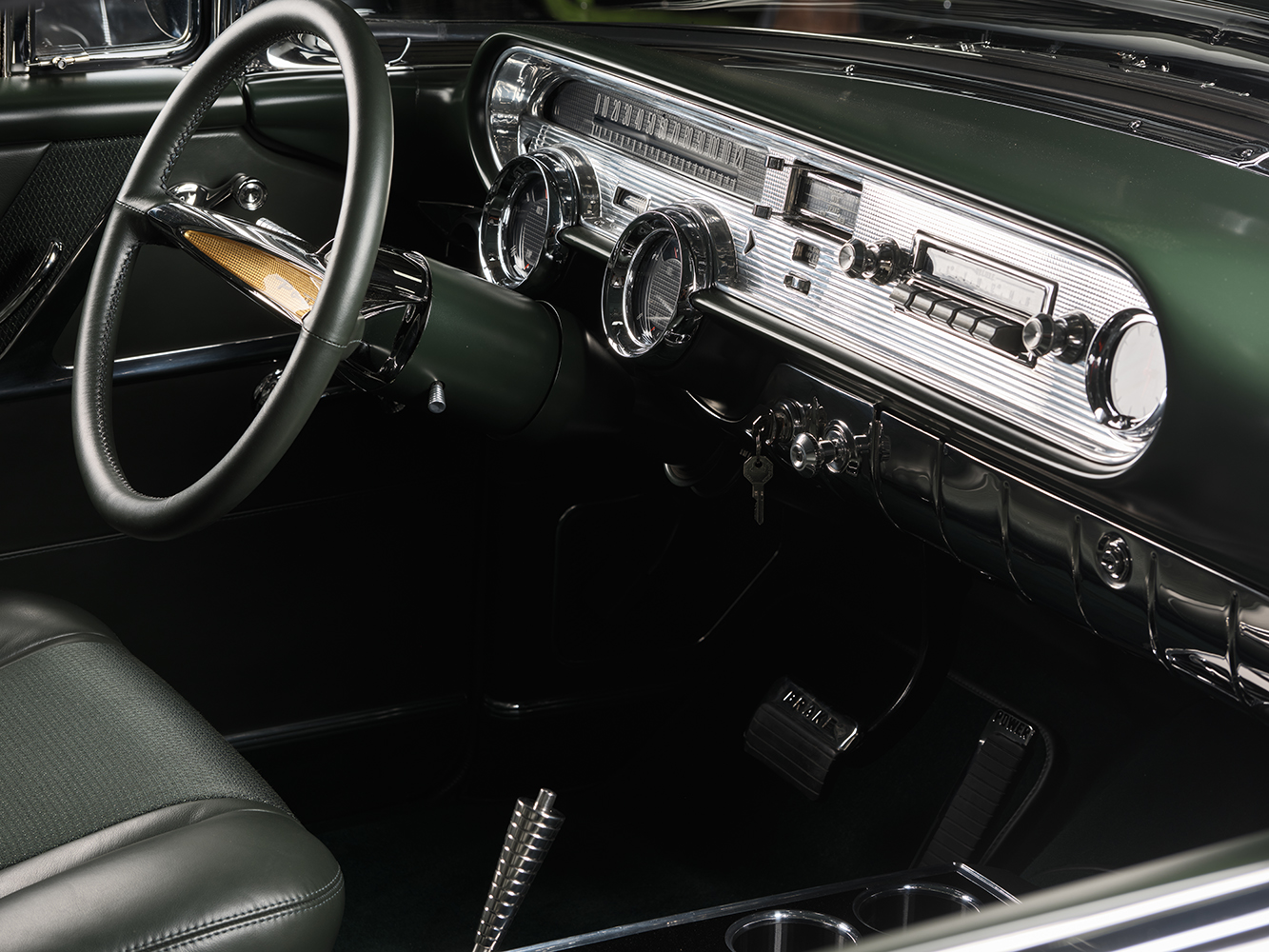
When examining the Kennys’ Safari, one can see the retention of much of its characteristic look, but there are subtle changes that genuinely enhance its appearance. So, what has been “massaged” on this 1957 Pontiac Safari wagon? At JHRS, the bodywork was expertly handled by Greg Chalcraft and Scott Falotico, and Johnathan Fischer who took the time to rework the bumpers and trim for a seamless fit. Additionally, several body panels were adjusted and “tightened.” Between 3/8 and ¾ inch, the crowns of the doors, quarter-panels, and fenders were removed to eliminate the “balloon” effect of the original body panels finessed by Jon Barefoot—one might say “like a glove.”

The inner fender panels were modified to accommodate the upcoming lower ride height while maintaining the factory appearance. We can also observe that the original firewall and core support were refined. Other visible body modifications include the removal of the fender top spears (typically resting above the headlights) and all badging from the front and side of the body; from here, both Chalcraft and Falotico receive credit for applying Axalta black. The brightwork found throughout the car comes from Jon Wright’s CustomChrome Plating. You’ll also find ARP hardware used throughout, holding this iconic metal artistry, which signifies the “golden years” of Detroit styling held tightly together.
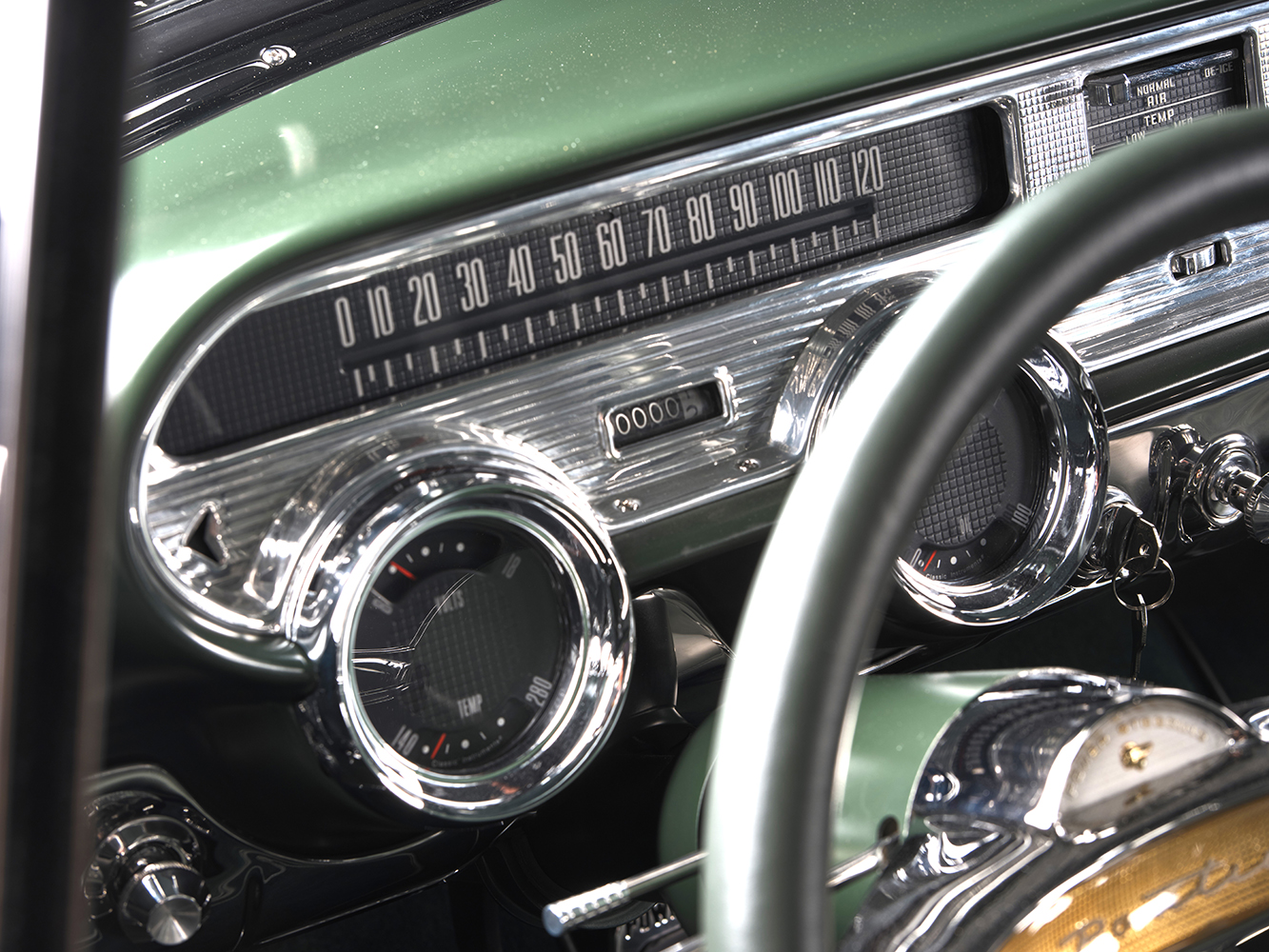
Beneath the glossy black paint lies a spacious interior that showcases extensive custom upholstery work completed at JHRS under the skilled guidance of Maria Garcia. The rear features custom seating crafted at JHRS, while the front is equipped with a pair of 1950s GM hardback buckets that frame a 1970 Chevelle center console, which was also modified at JHRS. All the upholstery is stitched in green Garrett leather and complemented by dark green carpeting and an ultra-suede headliner.
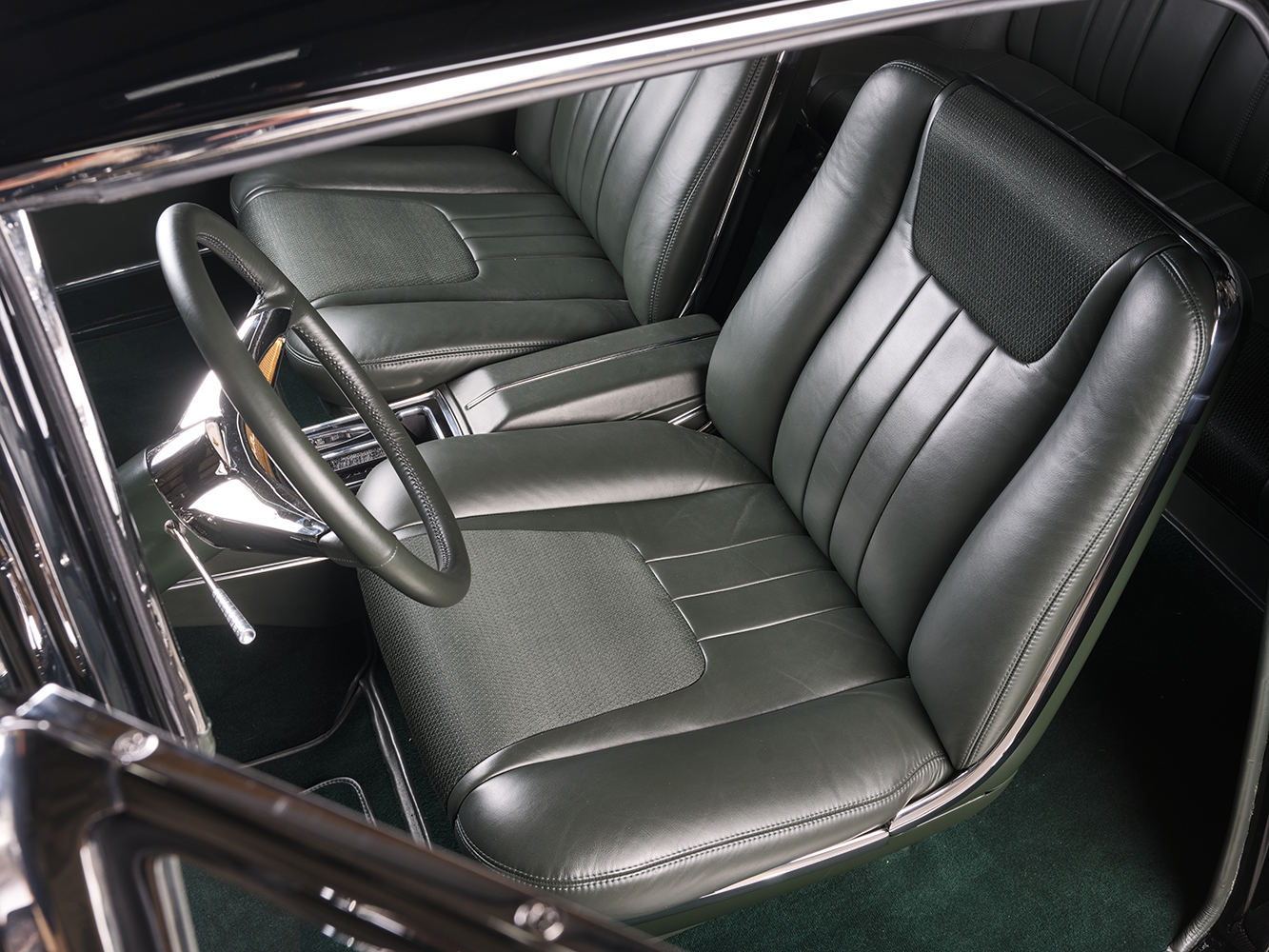
Additionally, a custom rear floor hatch in the storage area conceals extra storage space. The dashboard of the 1957 Safari wagon is original. Yet, it is outfitted with Classic Instruments gauges, a Vintage Air A/C Gen 5 system, and wired through an American Autowire harness, with all the installation done at JHRS. The dash also features an Ididit tilt column with a JHRS-modified factory wheel. A Pontiac V-8 propels this Safari wagon down the road, but what was once a 455-inch big-block has been upgraded to a 461-inch powerplant. Keith Dorton of Automotive Specialist Racing Engines managed the build using Mahle 9.7:1 pistons, a Molnar Technologies steel crank, and rods to ensure a balanced assembly.

Next, aluminum heads featuring ARP head studs were installed and topped with custom-machined valve covers from JHRS. A Pontiac tri-power intake is now paired with Autotrend EFI, which is controlled by a Holley Terminator X Max EFI system, with fuel supplied by a submerged in-tank GM electric fuel pump and capped with a custom-machined air cleaner system from JHRS. The JHRS-fabricated exhaust features 1-7/8-inch custom stainless headers leading into 2-1/2-inch stainless tubing, complemented by DEI-wrapped Borla stainless steel mufflers.
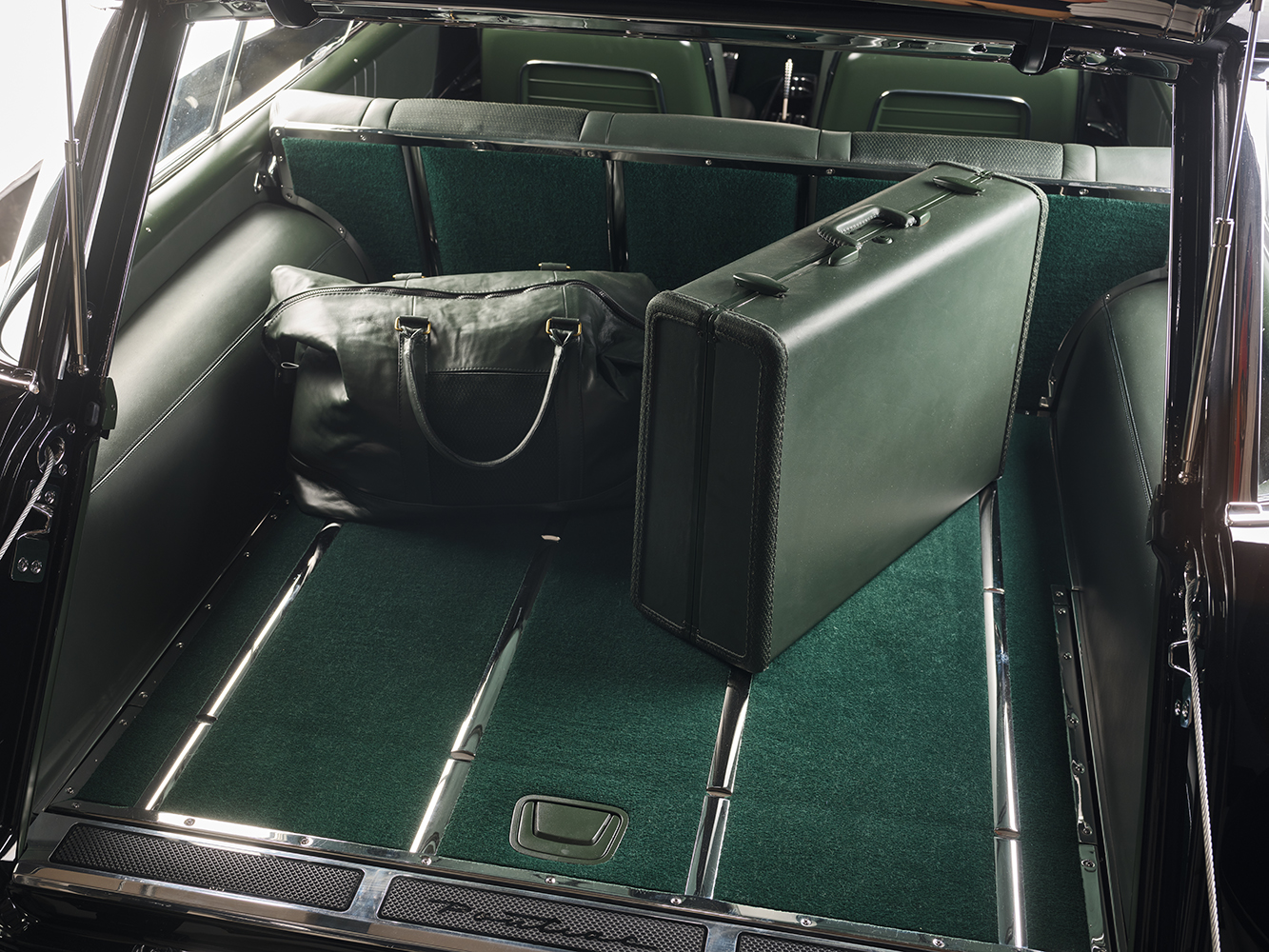
Other engine accessories include a starter and alternator combo from Powermaster, an Optima battery (hidden beneath the passenger side fender), and Johnson’s Radiator four-core copper and brass radiator. The 4L80E transmission comes from Bowler Performance Transmissions and operates through a Shiftworks shifter. Additional transmission accessories include an Earl’s Performance cooler and a Performance Driveline Engineering driveshaft.
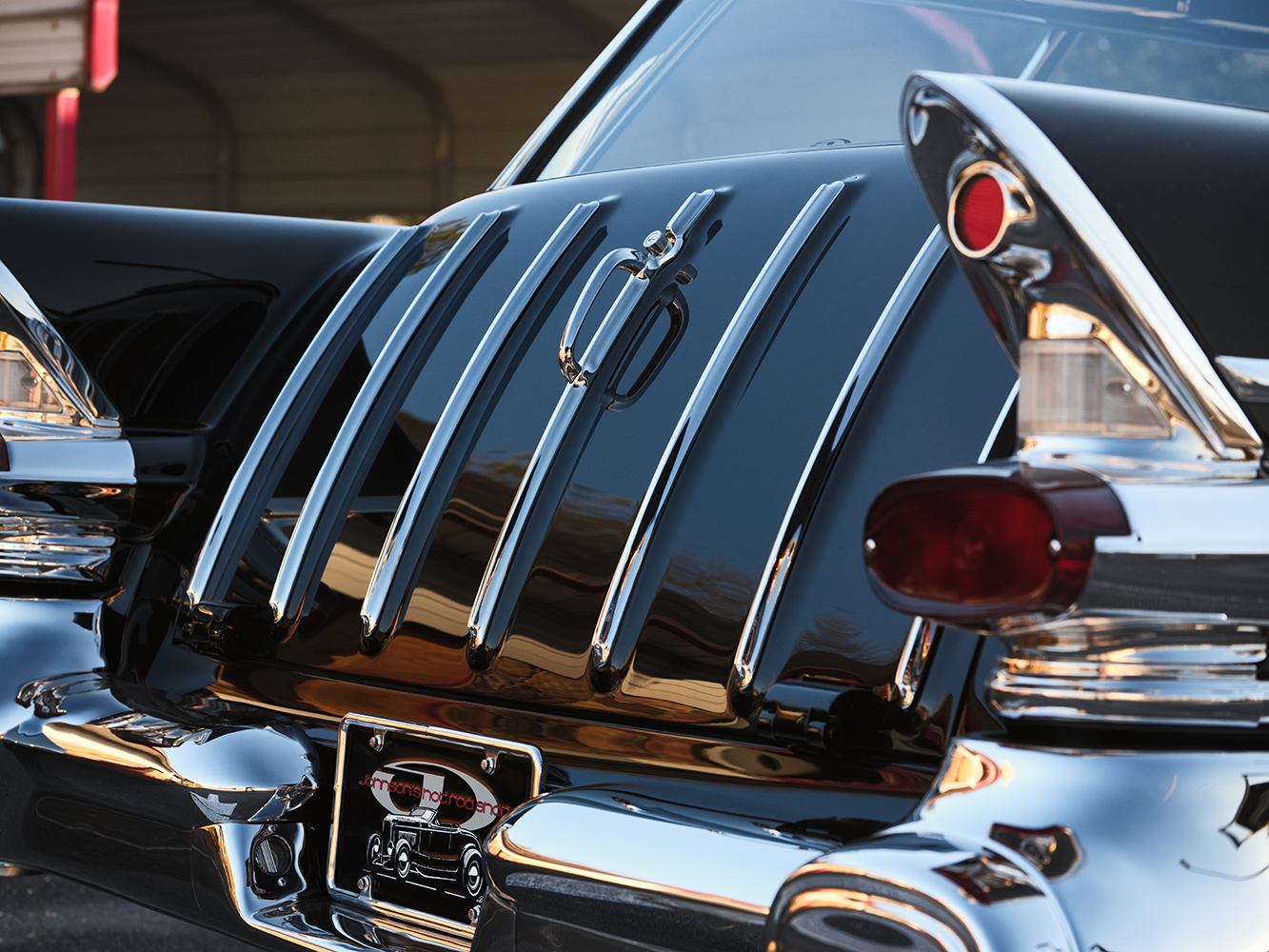
If you were out and about at rodding events last summer, there’s a good chance you spotted this Safari wagon, as it made the rounds at numerous events from coast to coast. Along the way, it also managed to take home a “storage area” filled with accolades—2024 GM Iron Builder of the Year, Builders Choice at Goodguys, 2024 Most Bitchin Finalist, and an Elite 10 at the Triple Crown of Rodding. It’s good looking and a great hauler.
Check out this story in our digital edition here.











